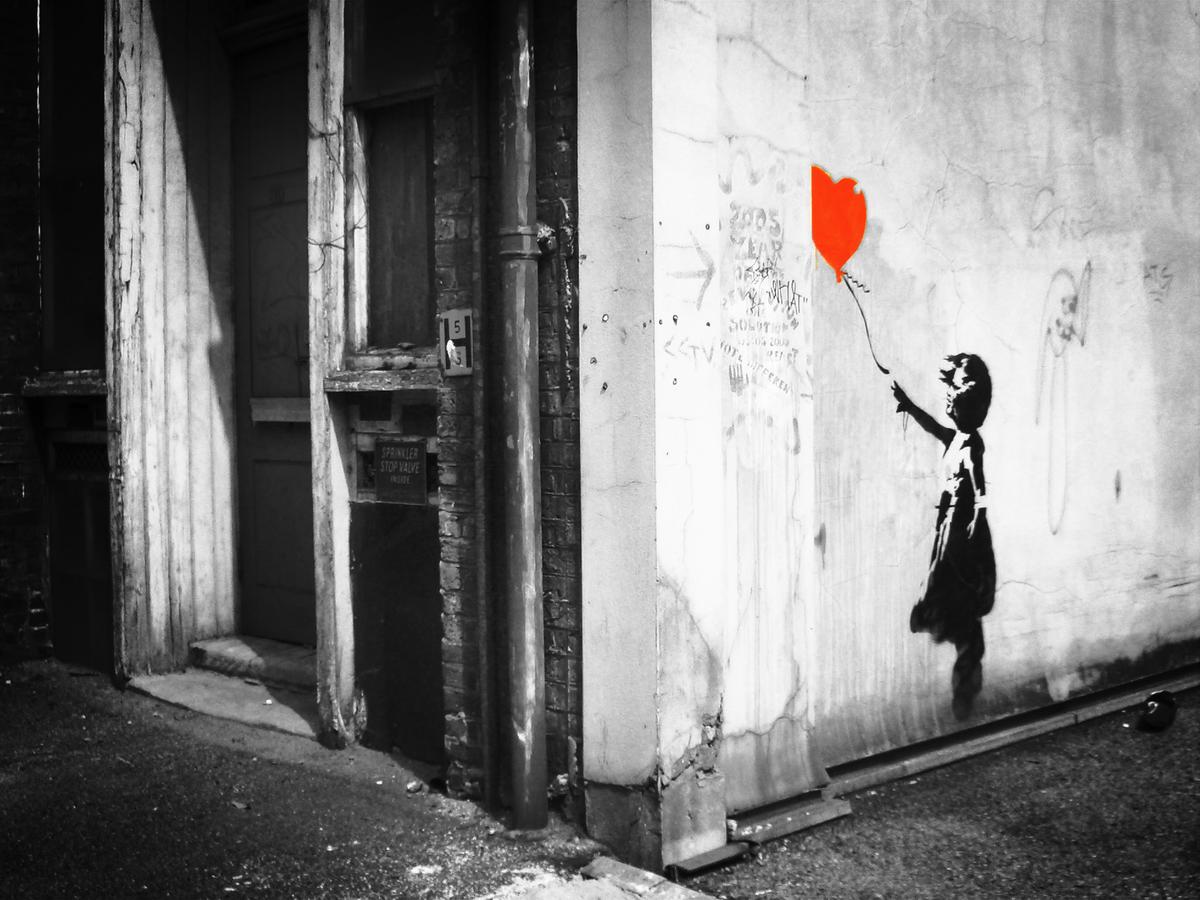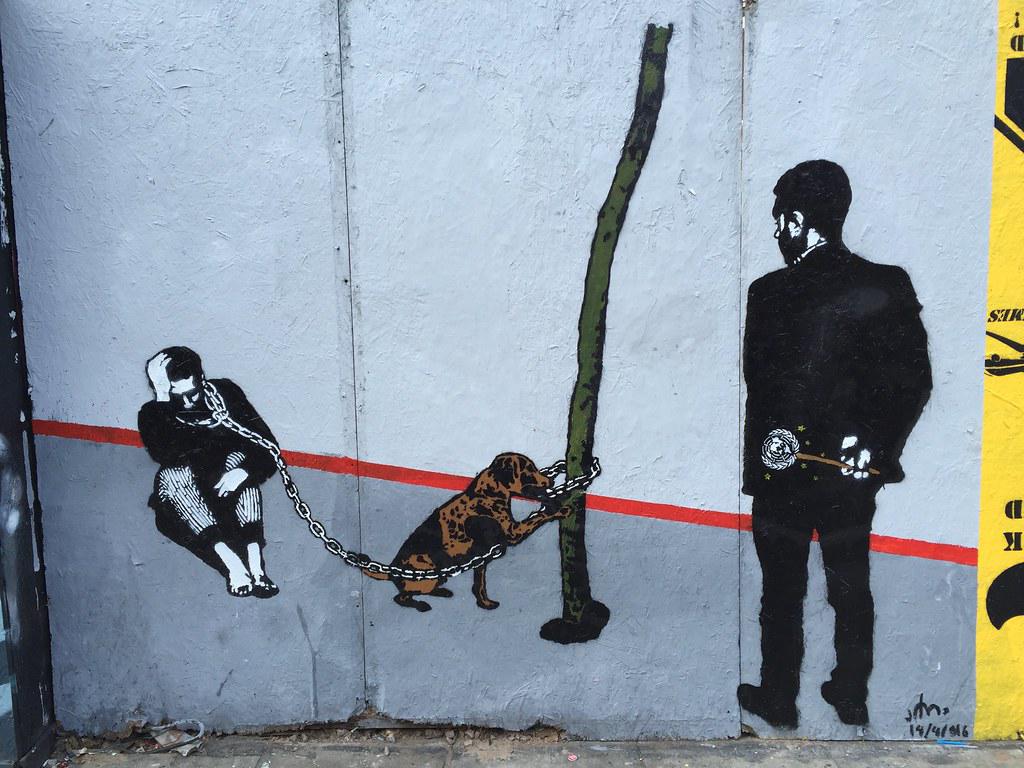Historical Use of Art in Politics
Art and politics have intertwined since ancient times, their relationship evolving through epochs and empires. The Assyrian Empire used art as a declaration of might, adorning palaces with grand reliefs showcasing kings in lion hunts and war victories. These scenes conveyed strength and authority, impressing subjects and intimidating enemies.
The Roman Empire excelled at using art for political purposes. Triumphal arches and statues celebrated military victories and solidified the emperor's god-like status. Coins carrying the emperor's face spread his image widely, turning currency into a canvas of control.
In the Byzantine Empire, mosaics and architecture like the Hagia Sophia narrated stories of divine rule. Here, politics and religion intertwined in art, reinforcing the emperor's divine right.
During the Middle Ages, gothic cathedrals stretched towards the heavens, art illustrating divine power and legitimizing earthly authority. Monarchs like Charlemagne used illuminated manuscripts to emphasize their rule's divine sanction.
In the 19th century, nationalism swept through France with Eugène Delacroix's "Liberty Leading the People"—a rallying cry on canvas blending romanticism and rebellion.
In the 20th century, art became a battleground of ideologies. In Soviet Russia, Socialist Realism painted an ideal communist world, while Nazi Germany's grand architecture and propaganda films constructed a story of Aryan supremacy. Across the ocean, America commissioned works under the WPA to uplift spirits during the Great Depression. Later, art transformed into a medium of protest, with pieces like Norman Rockwell's "The Problem We All Live With" giving voice to the Civil Rights Movement.
Art as a Medium for Protest and Social Change
Art's role as a medium for protest and social change is exemplified by several contemporary artists and movements. Banksy, the elusive street artist, uses public spaces to confront societal norms and critique political systems with satire. His murals, like "Balloon Girl," challenge viewers to question the status quo and ignite discourse.
Ai Weiwei, a Chinese artist and activist, creates installations that critique both his homeland's and global governmental discrepancies. His piece "Sunflower Seeds," an ocean of porcelain seeds crafted by 1,600 artisans, served as a commentary on individuality, human rights, and mass production.
The AIDS Memorial Quilt, initiated by Cleve Jones, stands as a powerful collective art project memorializing lives lost to AIDS. Each panel, crafted by friends and families, serves as a tribute and a form of protest against stigma. Displayed in public spaces, the quilt has become a moving call for compassion and awareness.
These artists and works demonstrate art's ability to transcend the canvas and impact social consciousness. By challenging authority, addressing injustices, and advocating for change, they're not just creating art — they're constructing bridges to a more aware and active society.

The Role of Art in Modern Political Campaigns
In modern political campaigns, art serves as a compelling agent of influence and persuasion. Today's campaigns use art to craft slogans, imagery, and viral moments that speak to the masses. Visuals in politics span billboards, social media graphics, and AI-generated art, each designed to capture the hearts and minds of the electorate.
Political campaigns leverage striking visual elements to go viral, using memes and motifs to resonate emotionally with audiences. A well-placed image or clever artwork can evoke:
- National pride
- Empathy for the marginalized
- Fear of the opposition
Each serving a strategic purpose to sway public opinion.
The rise of AI-generated art presents new possibilities and ethical challenges. AI technology allows campaigns to rapidly create lifelike images and immersive content, blurring the line between reality and fabrication. This raises questions about the potential for misinformation and the responsibilities campaigns have to truth.
While AI-generated art poses risks, it also offers opportunities for thoughtful engagement in political discourse. When used ethically, it could make complex policies more accessible and engaging through vivid visualizations that inspire informed decision-making.
As we navigate this intersection of art and politics, it's crucial to maintain transparency, authenticity, and responsibility. Only then can art continue its powerful role in shaping not only political campaigns but public consciousness in a rapidly evolving world.
Graffiti and Street Art as Political Expression
Graffiti and street art serve as raw forms of political expression, transforming urban spaces into galleries of democratic dissent. Artists like YOMI use spray cans to sketch stories that challenge authority and uplift marginalized communities.
For YOMI, graffiti is a clarion call to action, emerging from a background where censorship restricted creativity. His work connects disparate communities with messages shaped by experiences under authoritarian scrutiny.
"Street art thrives in urban anonymity, representing voices often unheard in conventional dialogues."
These artworks transform ordinary walls into canvases of cultural resistance, confronting observers with unfiltered truths about systemic injustice and inequality.
By bringing art to the streets, artists like YOMI democratize expression and challenge the commercialization of art. Their work invites passersby into a shared human experience, tearing down walls of apathy and exposing unseen stories.
Graffiti and street art stand as modern adaptations of historical protest forms. As YOMI and his contemporaries continue to paint their truths, they fortify the streets as spaces of resistance, amplifying the voices of those often muted by oppression.

Art's Impact on Political Movements
Art serves as a rallying point for political movements, forging connections between individuals and communities challenging the status quo. It becomes a catalyst for mobilization and empowerment, offering platforms for voices demanding to be heard.
The Black Panther Party's visual culture, particularly the work of Emory Douglas, branded their struggle for civil rights with a distinct identity. His bold depictions of African American liberation fighters encapsulated the movement's core of resistance and communal empowerment.
In Chile during the Pinochet regime, the Murals of Dignity Movement saw artists using urban canvases to voice political dissent. These murals transformed public spaces into platforms of nonviolent protest, reinforcing a sense of empowerment amid oppression.
The Women's March Movement's "Pussyhat Project" offers a recent example of art's impact on activism. The simple pink hats became iconic symbols of solidarity during the 2017 Women's March on Washington, unifying millions against gender inequality.
Art's potency lies in its capacity to span linguistic and cultural barriers. The photograph of Syrian refugee Aylan Kurdi, captured by J.E. Nilufer Demir, united global citizens in a moment of humanitarian reflection and sparked demands for change.
Whether as murals or woven into textiles, art within political movements plants seeds of empowerment and unity. It constructs bridges across divides, amplifying collective voices in the fight for justice. By visually capturing the spirit of movements, art becomes an enduring part of their legacy, inspiring and mobilizing through the universal language of imagination.
Art has always been a powerful force in shaping political landscapes, serving as both a mirror and a catalyst for change. From ancient empires to modern movements, its role in politics remains profound and enduring. As we reflect on this journey, we are reminded of art's ability to transcend boundaries and inspire collective action, leaving an indelible mark on society's quest for progress.
- Léger MJ. The Neoliberal Undead: Essays on Contemporary Art and Politics. Zero Books; 2013.
- Scruton R. Beauty: A Very Short Introduction. Oxford University Press; 2011.
- Murdoch I. The Sovereignty of Good. Routledge; 2001.






















